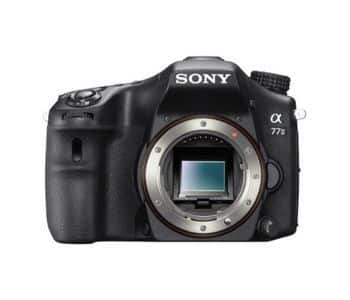Wondering what the best cameras are for wildlife photography?
When venturing out into the wilderness, one of the main principles of Leave No Trace is “Take nothing but photos and leave nothing but footprints.” I guess you’d better have a pretty slick camera, huh?
From African safaris to Alaskan cruises, seeing wildlife in its natural habitat is a truly marvelous experience. Lounging about with their family, hopping from one tree to another… all of these special moments are yours for the taking (with a camera of course), provided that you have the right equipment.
Here are ten of the best cameras for wildlife photography that will let you capture the sleekest of foxes and the highest flying birds anywhere you go!
View Contents
Editor’s Picks for Best Cameras for Wildlife Photography
Best for Beginner Wildlife Photography Camera
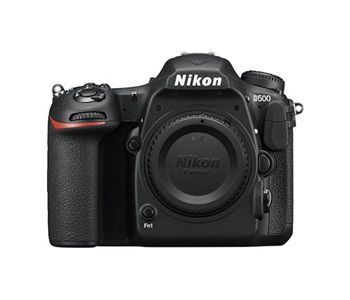
Best Mirrorless for Wildlife Photography
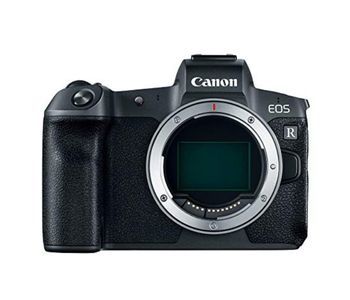
Comparison Table for Best Camera for Wildlife Photography
| Camera | Price | Weight | Reviews |
|---|---|---|---|
| Sony a77II | $$ | 1.49 lbs | Read Reviews |
| Sony A9 | $$$$ | 1.48 lbs | Read Reviews |
| Nikon D5 | $$$$ | 3.1 lbs | Read Reviews |
| Nikon D500 | $$ | 1.68 lbs | Read Reviews |
| Nikon 1 V3 | $ | 0.69 lbs | Read Reviews |
| Canon EOS-1D X Mark II | $$$$$ | 3.37 lbs | Read Reviews |
| Canon EOS 7D Mark II | $$ | 2 lbs | Read Reviews |
| Canon EOS R | $$$ | 1.5 lbs | Read Reviews |
| Fujifilm X-T30 | $ | 0.8 lbs | Read Reviews |
| Olympus OM-D E-M1X | $$$ | 2.19 lbs | Read Reviews |
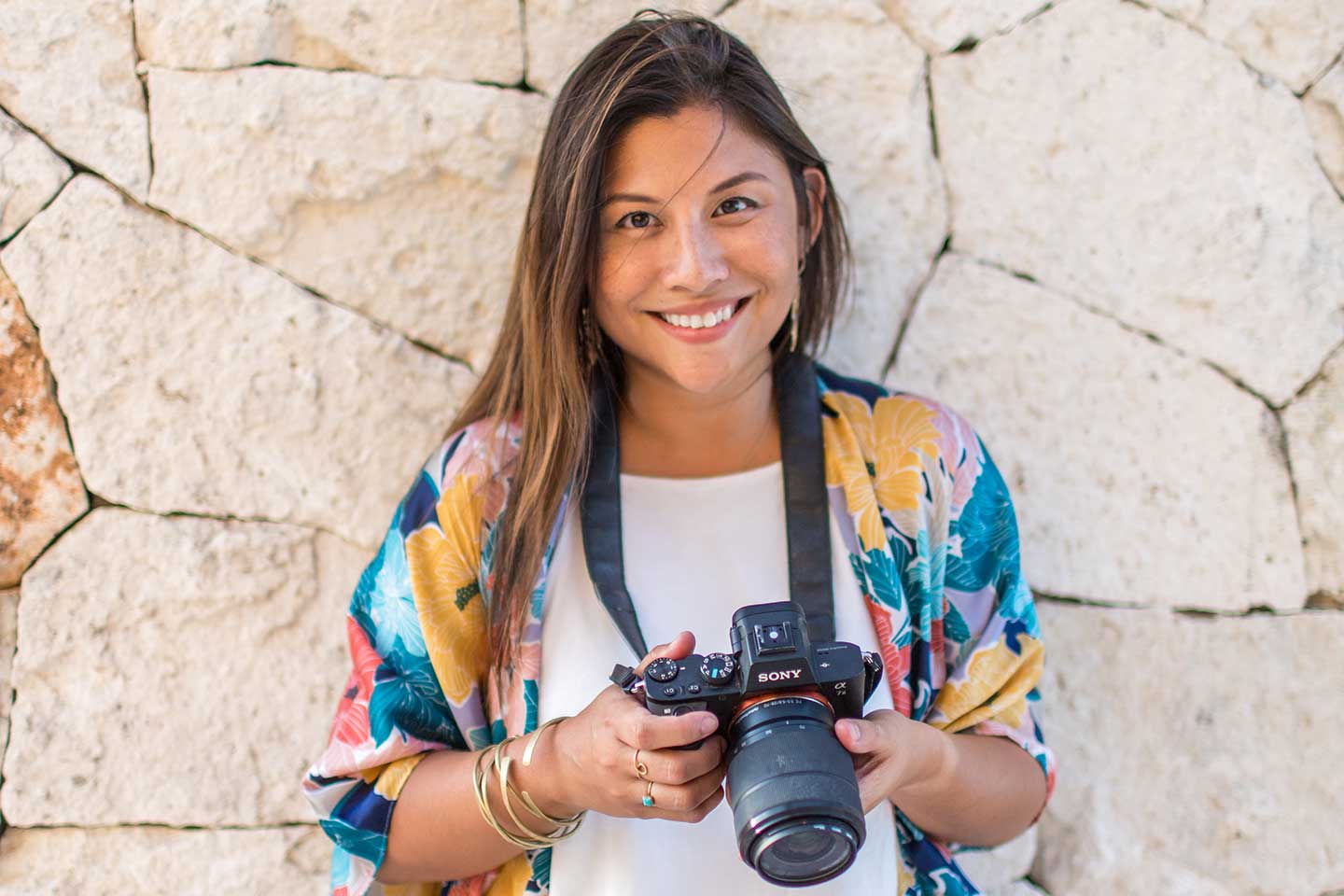
Wildlife Photography Cameras (2024)
Now that you know what to look for in a camera for wildlife photography, here are ten of the best cameras available for shooting wildlife!
Sony a77II
Specs: 24.3MP | 14FPS | ISO Range: 50 – 25,600 | BIONZ X image processor | 79 AF Points (15 Cross-Type) | 1.49 lbs
Pros: Good for beginners | Fantastic tracking | Great images at low ISOs
Cons: No weather sealing on body
A solid beginner option for any wildlife enthusiast, the Sony a77III will get the job done and take some stellar photos while you’re at it.
This DSLR camera is moderately sized, making it fairly easy to tote around on your adventures. Plus, it has a whole lot of built-in features that make shooting animals on the go easier than ever before.
The sensor on this camera is particularly impressive, with a fast processor to complement it as well. It can take 24 megapixel stills, shooting at 10 frames per second, meaning you’ll never miss a bird taking flight and you’ll be able to spot whatever’s roaming in the bushes.
There are also 425 contrast AF points, which means that your photos will be clear no matter how quickly you have to capture the shot. Then, when it comes to ISO, you’re able to set the sensitivity level to 25,600 — you can also shoot in some pretty low light and get a focused photo.
Weighing only 1.5 lbs, accommodating a wide range of lenses and nearly twice as fast as the previous model, this is a great camera to start learning on before springing for one of the more advanced models.
But even if an upgrade isn’t in your plans, there’s more than enough that you can do with this Sony number!
Sony A9
Specs: 24.2MP | 20FPS | Full-frame sensor | ISO Range: 100 – 51,200 | BIONZ X Image Processor | 693 AF Points | 1.48 lbs
Pros: Small, compact size | No blackout during capture | Silent shooting mode | Weather-sealed body
Cons: Expensive for a mirrorless camera
For a Sony digital camera that’s a little bit more advanced, the Sony A9 should do the trick.
This little mirrorless camera offers some serious power in a small package. It shoots in 24 megapixels with a full frame sensor that’s larger than those found in the average mirrorless camera. Pretty cool, huh?
The A9’s autofocus puts on a really stellar show, covering nearly 93% of the frame with its 693-point focal plane phase detection system. This means you’ll be able to capture anything roaming past your lens in the clearest definition possible. Plus, with 20FPS of continuous shooting, you won’t miss a thing.
With built-in 5-axis image stabilization, your photos will be clear even if you’re shooting by hand. The superior battery means long-lasting camera life and more amazing moments captured in the outdoors. Finally, a real stand-out when it comes to shooting wildlife with this camera are the different modes such as silent shooting mode or the Tru-Finder mode.
Too good to be true? Well, kind of. The price tag on this baby is rather steep but 100% worth it if you know what you’re getting!
Nikon D5
Specs: 20.8MP | 12FPS | Full-frame sensor | ISO Range: 100 – 102,400 | EXPEED 5 omage processor | 153 AF Points | 3.1 lbs
Pros: Nearly unmatched for professional use | Great quality even at high ISO
Cons: Heavier | No in-body image stabilization
Often referred to as Nikon’s “flagship DSLR,” this sturdy camera is ready to accompany you on any adventure.
Perfect for shooting wildlife, this camera is super fast, with sharp autofocus and a full range of functions so that you’ll get crystal clear photos. The most notable component of this DSLR camera is the incredible sensor and ISO range that can be expanded to 3,280,000! While your photos may come out pretty noisy at this setting, at least you can see the capabilities this camera’s sensor has when it comes to letting in light when it’s dim.
The Nikon D5 shoots at 12FPS. The autofocus is freaky fast with 153 AF points, 99 of them being cross-type. 15 of those points can work with apertures as low as f/8! The camera processor is built to handle this kind of AF with an EXPEED 5 image processing engine to take care of all of those 20 megapixel stills.
All of this is to say, with the Nikon D5, you’re getting pretty much the best of the best of everything.
There’s more! The most special quality of this camera is the dual-shutter release buttons that allow you to shoot vertically just as comfortably as you do horizontally! Pretty special, wouldn’t you say?
This is an ideal camera for professionals looking to capture some gorgeous and fast-moving wildlife.
Nikon D500
Specs: 20.9MP | 10FPS | Cropped sensor | ISO Range: 100 – 51,200 | EXPEED 5 image processor | 153 AF Points | 1.68 lbs
Pros: Good for beginners | Weather-sealed body | LCD touchscreen display | Long battery life
Cons: No built-in flash | Tricky to move AF points with joystick
The Nikon D500 is a DSLR that pretty much embodies everything awesome about the D5, but without all the bells and whistles that come along with it.
A bit of a “dumbed down” version of the top-of-the-line D5, this camera is anything but dumb with 20 megapixel stills, 153 AF points, and shooting at 10FPS. The Nikon D500 still includes the EXPEED 5 processor that completes the D5, along with the same AF system, but it’s not as fast as its brother.
It also has a cropped sensor rather than a full-frame. This may effect the photos but also makes the camera much, much lighter.
That said, this camera still takes some pretty darn good photos, especially of wildlife, thanks to its wide ISO range, comfortable body, and easy-to-use system. It’s great for beginners looking for something that takes some serious photos and is rugged enough to be brought on adventures.
The D500 has a weather-sealed body, keeping dirt and grime out, along with a 3.2″ LCD touchscreen. You’ll be easily able to toggle through settings and photos to get to exactly what you’re looking for.
At this price point, the Nikon D500 is a seriously great deal.
Nikon 1 V3
Specs: 18MP | Up to 60FPS | Cropped sensor | ISO Range: 160 – 12,800 | EXPEED 3 image processor | 175 AF Points | 0.69 lbs
Pros: Extremely compact and lightweight | Very fast and powerful
Cons: Doesn’t perform well in low light
Looking for a Nikon that’s smaller than a DSLR? Well, the Nikon 1 V3 is an extremely fast mirrorless camera that’s ideal for wildlife photography.
Whether you’re a beginner looking for your first camera or a pro looking to downsize, the Nikon 1 V3 is simple enough to get the job done, while having all the advanced settings needed to please professional photographers.
This camera packs a serious punch when it comes to speed and power. Its 175-point AF system will track your subjects until you’re ready to capture the perfect shot. Plus, once you’ve set and locked your focus, you can shoot up to 60FPS (!!!) which is an enormous jump from the 10 to 14FPS we’ve seen in other wildlife cameras.
The best part about this camera is definitely its size. It weighs less than a single pound and is only 4.5″ wide. However, with a miniature size comes a few sacrifices.
This camera only shoots in 18 megapixels which is a serious downgrade from other cameras mentioned, and it also has a much smaller ISO sensitivity range. But that can be expected from a camera with quite a compact body.
However, if you choose the right lens and your position just right, you’ll end up with some incredible photos of wildlife from this little guy.
Canon EOS-1D X Mark II
Specs: 20MP | 16FPS | Full-frame sensor | ISO Range: 100 – 51,200 | Digic 6+ image processor | 61 AF Points | 3.37 lbs
Pros: Long battery life | Unreal autofocus | Very fast
Cons: Expensive | Touchscreen is limited
All hail the King of Canons for wildlife photography! This is truly a remarkable DSLR when it comes to shooting wildlife and you’ll never be disappointed with the photos you get with this digital camera.
We already know that Canon makes some top-of-the-line cameras for travel, but the 1D X Mark II knocks the ball right out of the park. It combines speed with power by shooting 16FPS while using its 20MP full-frame sensor in Live View.
The AF system is quite advanced as well, complete with 61 AF points (41 Cross-Type), more than half of which are compatible with apertures as low as f/8. It’s no wonder why people sing the praises of this camera time and time again!
The real power of a Canon camera lies in its lenses, of which there is an abundance. There are tons of compatible telephoto lenses which are the perfect for shooting wildlife. Get some of those and you’ll never miss a moment, near or far away.
This is an expensive camera and it’s more suited towards professionals, but there’s something to love for everyone in this bad boy (if you’ve got the budget for it). Just try it for yourself!
Canon EOS 7D Mark II
Specs: 20MP | 10FPS | Cropped sensor | ISO Range: 100 – 16,000 | Dual Digic 6 image processor | 65 AF Points | 2 lbs
Pros: Very easy to use | Great image quality
Cons: Poor battery life
The Canon EOS 7D Mark II is an entry-level Canon camera from the same family that is also prime for catching wildlife in its natural habitat. It’s certainly an older model dating back some time, but it’s trusty and works like a charm which is why it’s made this list!
A fraction of the price and much less complicated, this camera is a great option for more casual shooters looking to develop their skills. The camera takes 20 megapixel stills and can shoot up to 10FPS in a single burst.
The ISO range is pretty decent, and it weighs considerably less than the EOS 1D.
You can still get professional-quality photos with this camera as the processor is still top of the line and the AF is outstanding with 65-point all cross-type!
What’s worth mentioning about this camera is that it does rather well in low-light situations because this is what the AF system is optimized for. So be sure to get out there for sunrise and sunset because you’re bound to capture some magical shots.
Finally, like other Canon cameras, you have a gloriously wide range of lens options to choose from, many of which are more than ideal for shooting wildlife.
Canon EOS R
Specs: 30MP | 8FPS | Full-frame sensor | ISO Range: 100 – 40,000 | Digic 8 image processor | 5,655 Selectable AF Points | 1.5 lbs
Pros: Mirrorless with a full-frame sensor | Tremendous amount of AF points | Great in low light
Cons: No in-body image stabilization
A final Canon option to appease all you mirrorless camera fanatics is the EOS R, which is Canon’s mirrorless camera featuring a full-frame sensor. Yes, it’s a little bigger than normal mirrorless cameras — and yes, it shoots a heck of a lot better too.
With the EOS R, you get a superior AF detection system where you’re able to manually select 5,655 AF points that cover nearly 90% of the image’s frame. That’s a whole lot of autofocus going on!
This camera also has a remarkable ISO range for a mirrorless camera, making it great for situations with low light or times of day where the sun is going down (or coming up!). The system is able to function at apertures as low as f/11, which means that there’s a whole lot of light being taken into that full-frame sensor.
With 30 megapixels and a DIGIC 8 image processor, you’ll get shockingly clear photos and a wicked fast response from the camera — two things that are essential when it comes to taking photos of wildlife!
Unfortunately, there’s no in-body image stabilization with this camera. But with the wide range of compatible Canon lenses, you should have no problem finding just the one to get the job done.
Fujifilm X-T30
Specs: 26MP | 30FPS | Cropped sensor | ISO Range: 160 – 12,800 | X-Processor 4 Quad-Core CPU | 425 AF Points | 0.8 lbs
Pros: Inexpensive | Very lightweight | AF covers 100% of image frame
Cons: No in-body image stabilization | Grip not great for larger lenses
As one of the least expensive cameras on this list, this number from Fujifilm really packs a punch when it comes to wildlife photography — without completely breaking the bank either!
This X-T30 camera is an updated, more compact version of the Fujifilm X-H1, weighing just half as much as the previous model and shooting with a much higher resolution.
This camera is seriously fast and can capture up to 20FPS with its electronic shutter. When you set the resolution to 16.6 MP, you’re able to shoot up to 30FPS which is pretty outstanding if you get a look at how small this little guy is!
The AF is also rather remarkable with 425 points that cover 100% of the image frame. That means you’ll be getting clear photos time and time again, no matter what animal you’re capturing on camera. Not to mention, there’s super strong face and eye detection built right into the AF so your camera is able to focus directly on the object in the frame.
With all that’s so great about this camera, one of the biggest downsides when it comes to this upgrade is that there’s no in-body image stabilization, like there was with the X-H1. Not to worry though, there are plenty of lenses that make up for this and take some stellar photos to boot.
Olympus OM-D E-M1X
Specs: 20MP | 18FPS | Cropped sensor | ISO Range: 200 – 25,600 | Two TruePic VIII image processors | 121 AF Points | 2.19 lbs
Pros: Outstanding weather sealing | Very long battery life
Cons: Small sensor size
Here’s a final mirrorless camera for all of our advanced photographers entranced by wildlife. This model from Olympus is one of the best on the market right now.
The OM-D E-M1X camera is super fast, with lots of cool functionality that makes shooting wildlife as easy as it is enjoyable. With 2o megapixels and and 18FPS with AF tracking, you can easily get the ideal shot with just a little bit of patience and the snap of a button.
Even easier? Set your camera to silent mode and shoot like the ultimate stealth you are.
When the AF is locked, you can shoot up to 60FPS (holy moly!) so no worries when it comes to shooting animals running wild or birds taking flight. Plus, with the in-body image stabilization, you won’t have to worry about shaky pictures while shooting handheld. With 7 stops of correction, you’ll have crystal clear photos, literally with the press of button!
One of the best features on this camera for shooting wildlife is the Olympus Pro Capture mode. It will buffer up to 35 frames, and then take the 35th frame when the shutter is finally depressed. So take your time waiting for the perfect moment, this one is all yours!
Psst...Want in on a Secret? 🤫

We've scoured the internet for the best ALL-AROUND travel shoe and Tropicfeel wins by far. We've taken ours through rivers, jungles, and cities and they're still alive and kickin'. Check them out below.
How to Choose the Best Camera for Wildlife Photography
Since taking photos of wildlife is about getting close-up photos without startling or surprising unpredictable animals, you’re going to need to keep a few things in mind when choosing the right camera for your adventures. And no matter which camera you choose, you’re going to want to pair it with a telephoto lens so you’ll be able to catch your far-away subjects without losing image quality.
Here’s our guide on how to choose the best camera for wildlife photography.
Fast Autofocus (AF)
In order to capture wildlife in photos before it darts into a deeper part of its environment, you’re going to need a quick working camera that can focus on your subject in the blink of an eye. Seriously, there’s nothing more frustrating than missing a prime shot because your camera wouldn’t get into focus.
With a fast and sharp autofocus, you should be able to take accurate shots of your wildlife subject at a quick speed. This way, you won’t have to worry about fiddling with knobs and dials to get your camera in the exact right position while in a rush.
You can typically find fast autofocus on more high-end cameras employing the latest technology. You’ll want to look for something with a decent amount of AF points or multi-point AF because that means that more information is being sent to the AF processor. This creates a clearer shot in the end.
A high-end camera should also have a powerful processor which will make up for what AF points are lacking in the processing of the focus.
A last element that will affect AF speed is the type of lens you’re using on your camera. While the body of your camera may have certain AF capabilities, the lens you choose to use will aid or degrade this. So whatever you do, spring for a high quality lens that has top-notch performance.
Frames per second
Besides having a fast autofocus, you’re going to want a camera that shoots quickly. Being able to shoot continuous bursts is super helpful when it comes to shooting wildlife, especially animals that are moving around.
With more frames per second, the more likely you are to get the ideal shot while taking multiple pictures at once. Just think about it — catching a bird in flight or a jungle cat about to pounce. These things can only be captured when a camera shoots numerous frames per second!
That said, continuous shooting can greatly depend on the AF mode set on your camera. You’re going to want something that can have continuous AF at no less than 8FPS. This essentially means that instead of just having AF on the first frame, you’ll have it for all eight frames shot.
Zoom Range
When it comes to responsible animal sightings, you want to always capture wildlife from a safe distance. This is where having a good zoom range comes in. While you can drastically improve this based on the type of lens that you have, if you’re choosing a camera with basic lens, make sure you get one with a generous zoom.

Sensor Size
No matter what kind of lens you have on your camera, the sensor size in the body will always dominate when it comes to image quality. Generally, you’ll find cameras with a crop sensor or a full-frame sensor, with the crop sensor being smaller in size than the latter.
A cropped sensor makes for a significantly lighter and more compact camera while still giving you 1.5x reach while shooting. Cameras with cropped sensor are also much less expensive than those with a full-frame sensor, not to mention much easier to take along on your wildlife adventures.
On the other hand, a full-frame sensor is a go-to for professional photographers. The bigger sensor means there’s more surface area for the camera to collect light and take better photos in dimly lit situations. However, the price that’s paid is much, much steeper and a full-frame sensor results in a bigger and bulkier camera as well.
Low Light Performance
All photography buffs know that the ideal time to shoot is during the golden hour. The light starts to settle and everything starts to get a little bit darker. But to make the most of your shots, you’re going to need to shoot with a camera that has high ISO.
However, when shooting in higher ISOs, you tend to lose image quality so you’re going to want to find a camera that allows you to shoot in low light.
Size, Weight, and Quality
Finally, you’re going to want to seriously take into account the size, weight and quality of the camera you choose.
Let’s start with size. Having a camera on the smaller side is certainly beneficial when it comes to traveling around with it and whipping it out the second wildlife emerges. However, there are sacrifices to be made with smaller cameras such as less powerful processing systems and a smaller range of capabilities.
The choice is yours here — either you opt for maximum portability or go with something that can really capture all of the beauty in a single photo. Just remember that larger cameras require traveling with some serious hardware as well, like tripods!
The weight of a camera is mainly influenced by the size, but there are certain contributors like sensor size and internal technology that can add to a camera’s weight. Higher quality cameras tend to be much, much heavier than a standard point-and-shoot, but not to fear, there are definitely cameras that are decently light and still takes some killer photos.
Last but not least, you should not compromise when it comes to your camera’s quality. Smaller and lighter may mean lower quality, but beyond that you’re going to want something that’s durable and ready for adventures in the wild.
Make sure to choose a camera with a weather-sealed body to prevent dirt, dust, or light precipitation for infiltrating the camera base.
Pick out lenses that aren’t too fragile to be transported from one place to the next.
Whatever you do, choose a camera and accessories that don’t mind getting a little bit down and dirty with you when it comes to shooting what rarely meets the eye!
To help you remember the main features, here’s a quick infographic on what to look at when choosing the best camera for wildlife.
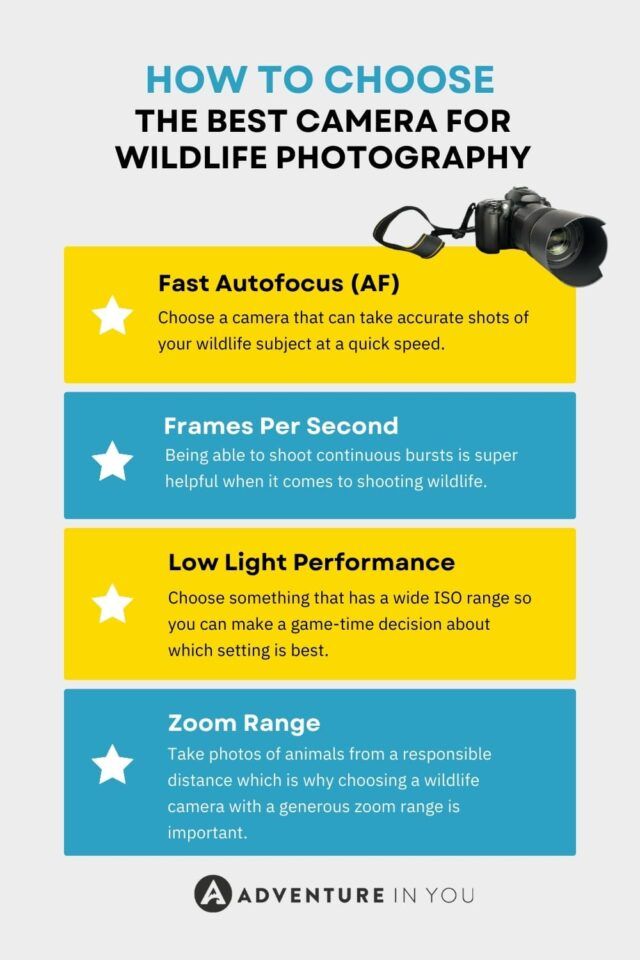
Read More: Best Drones for Travel (+ Must-Have Accessories, Cases & More!)
Which camera do you think is best for your wildlife photography needs? With so many options it can be overwhelming but the most important part is to choose a camera that can come everywhere with you and takes amazing pictures.
Now, what are you waiting for? It’s time to head out and capture that Nat Geo shot!
Looking for travel cameras and related gear?
- Best GoPro Alternatives: Ultimate Guide to Action Cameras
- Ultimate Guide: Best Camera Bags for Travel
- Akaso V50 Elite Action Camera Review: Is It A Worthy GoPro Alternative?
Inspired? Pin It!

